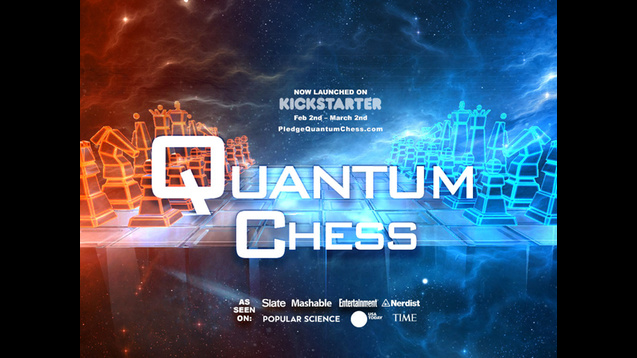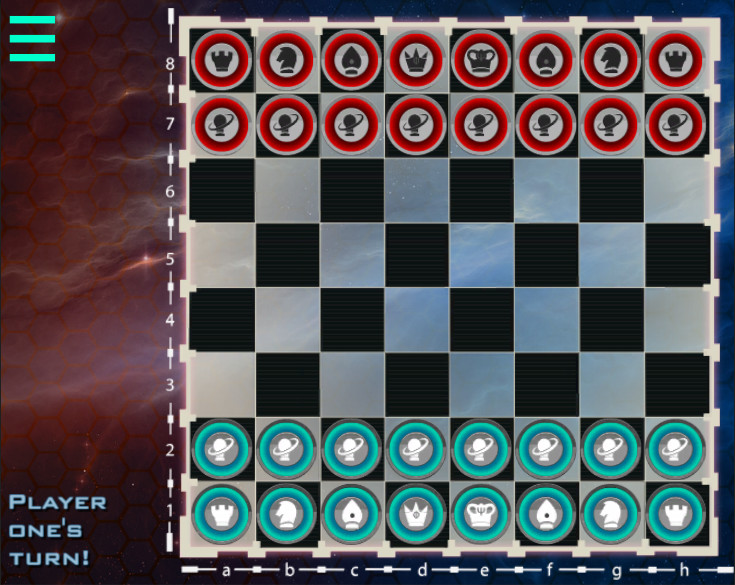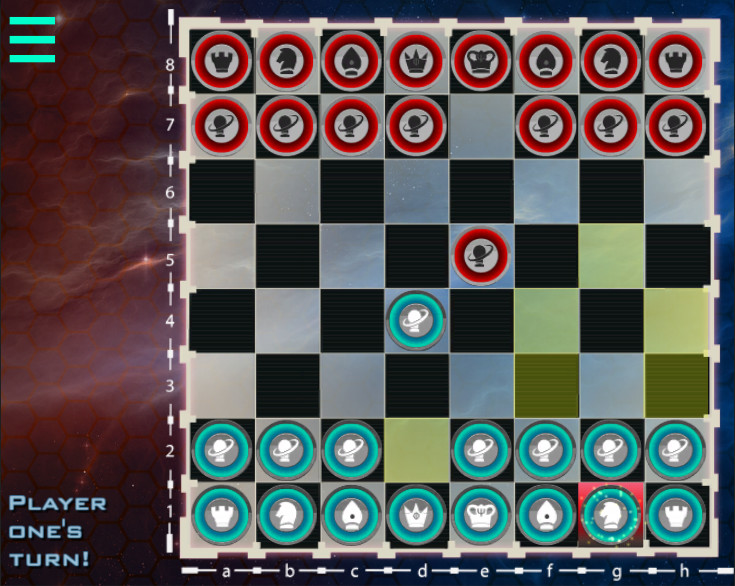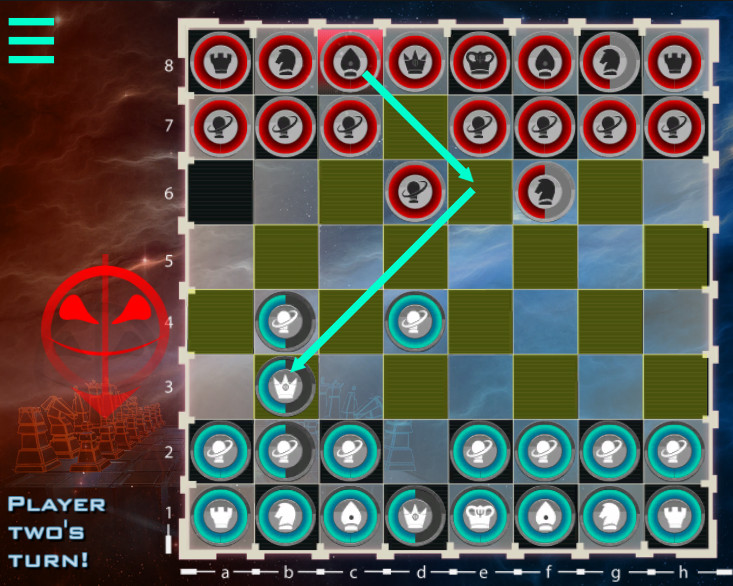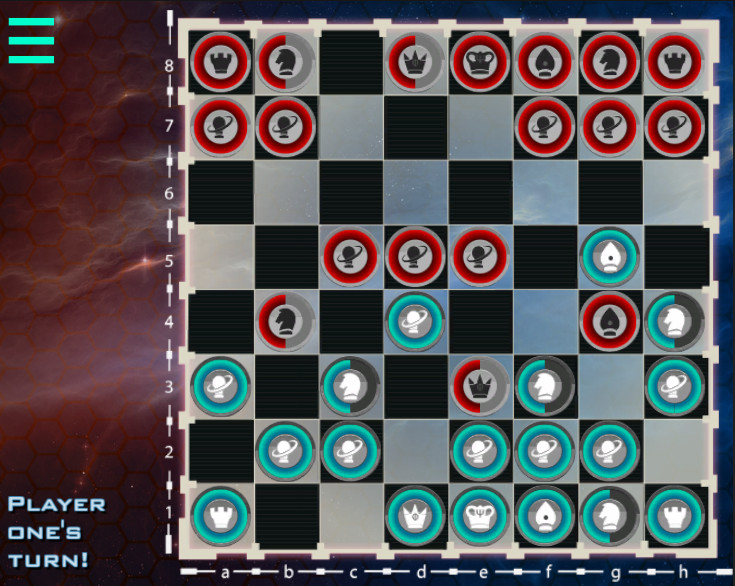Relative phase is an important concept in quantum physics because it can change the outcome of an operation through interference. In Quantum Chess, moves are unitary operations, and their outcomes can change if the underlying state has certain phase characteristics.
Until now the player has only been presented with probability information. This could lead to confusing situations where moves appeared to have no effect. After some careful thought, and some math, the game can now display some basic relative phase information. It isn't complete, but it should be relevant to a lot of moves. Here is an example.
The Merge move is designed to undo a Split move. If used immediately after a split it should result in 100% of the piece being in the target square (assuming there are no pieces blocking the paths). Here we can see how it acts on the queen.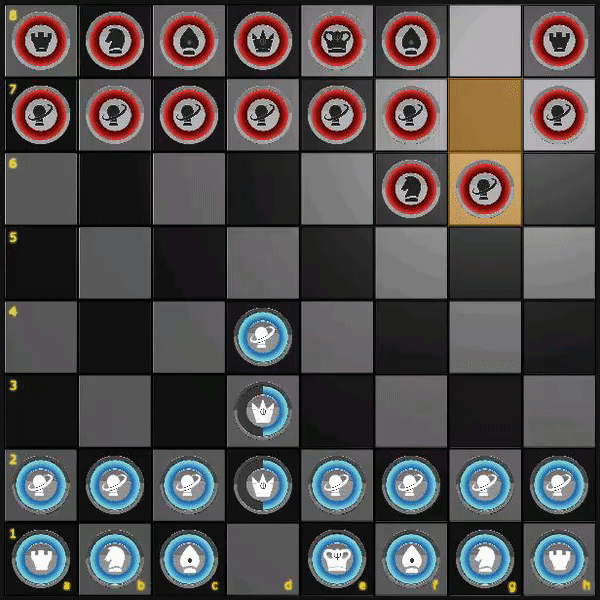
Notice the yellow lines on the queens involved in the move are pointing in the same direction. We call this being "in phase".
Now if we perform a Standard move for the queen in d2, moving it to d3, and then perform the Merge move, we get something different.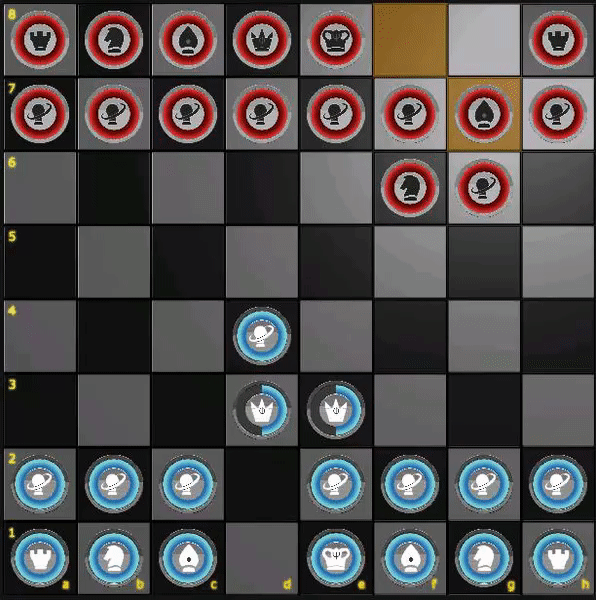
Notice that the standard move has caused the yellow lines to no longer point in the same direction. The piece that was moved picked up a relative phase of pi/2 compared to the one that didn't move.
Phase can be a complex topic. But if you play around with moves, and take notice of how the phase indicators relate to each other, you can gain an intuition for how it will change the outcomes. This is the first successful attempt at getting meaningful phase information into the game, and it will likely evolve.
I can't wait to get this out there for people to play with!
Minimum Setup
- OS: Ubuntu or equivalent
- Processor: 1GHzMemory: 2 GB RAMStorage: 1 GB available space
- Memory: 2 GB RAMStorage: 1 GB available space
- Storage: 1 GB available space
[ 6512 ]
[ 4480 ]
[ 2953 ]

